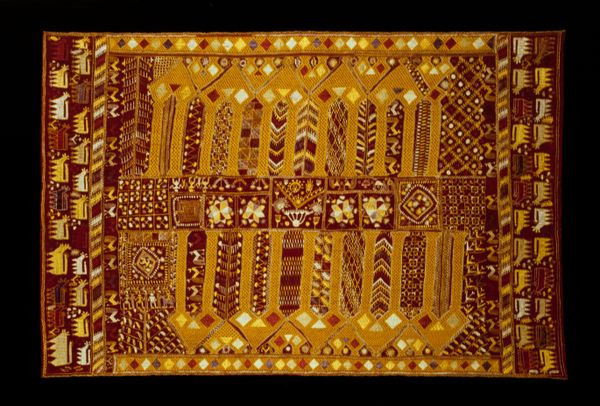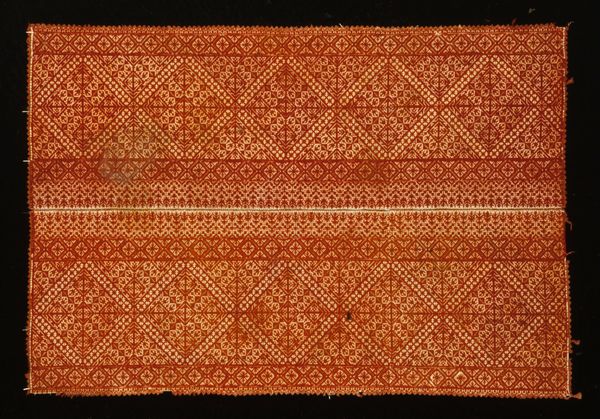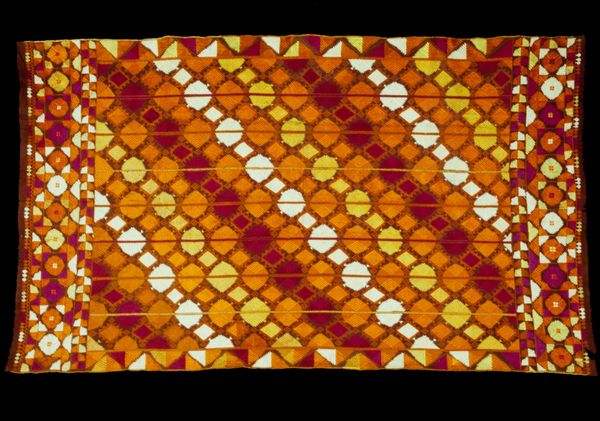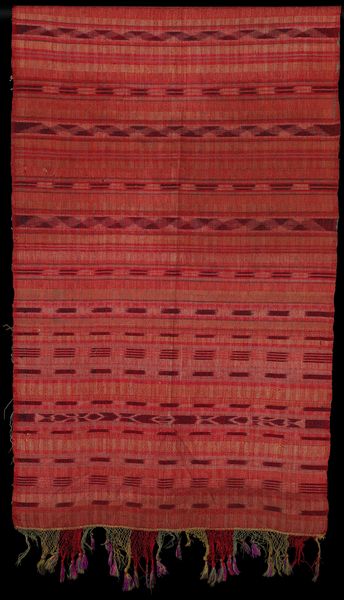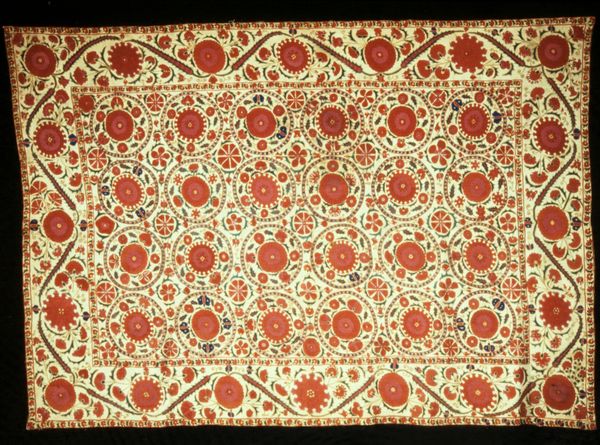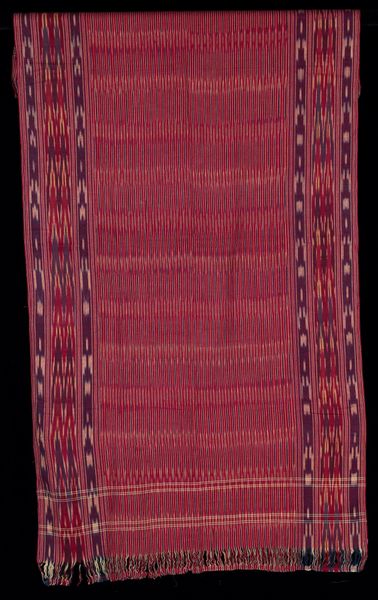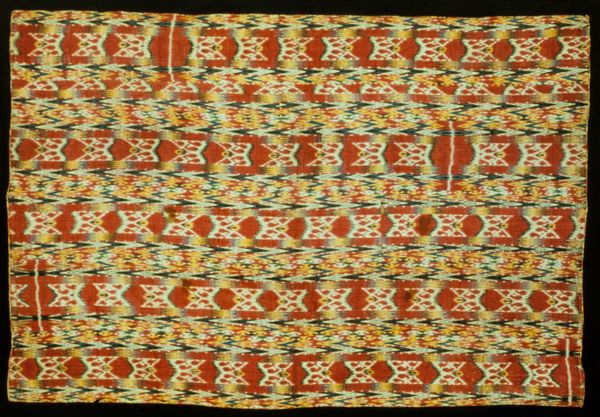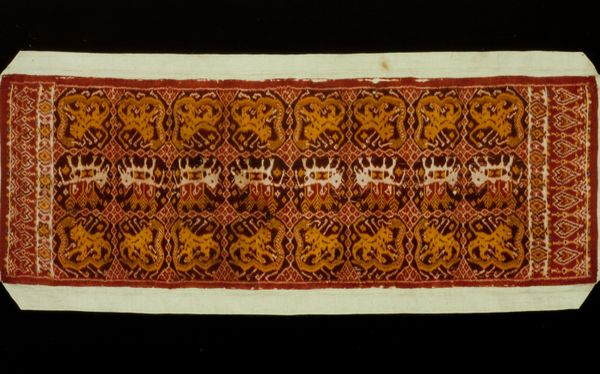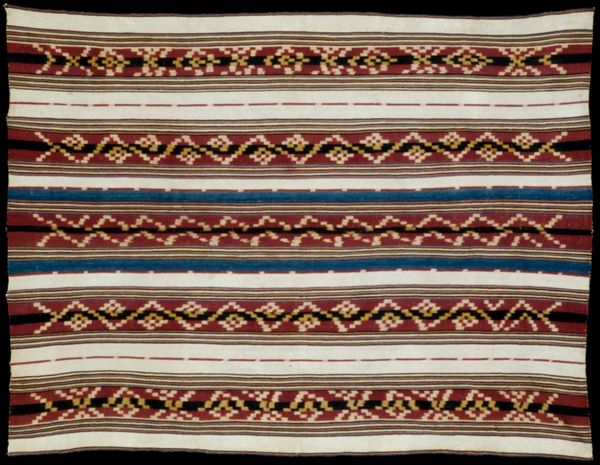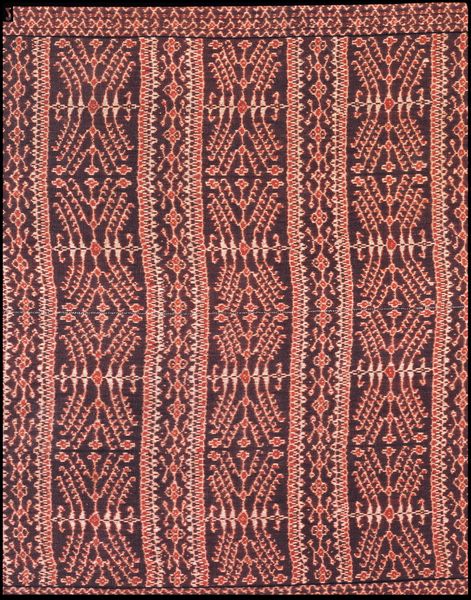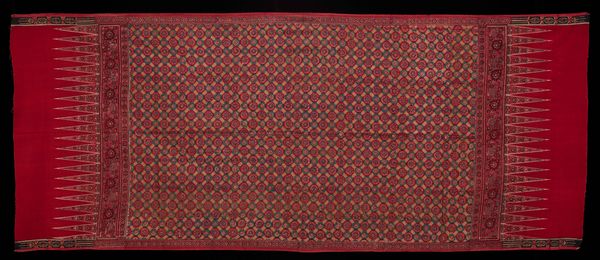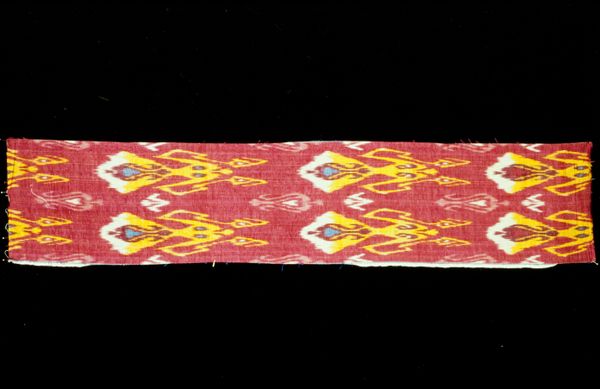
panel, silk, weaving, textile, cotton
#
panel
#
silk
#
pattern
#
weaving
#
textile
#
geometric
#
cotton
Dimensions: 49 3/4 x 86 in. (126.37 x 218.44 cm)
Copyright: Public Domain
Editor: We’re looking at a "Panel" made around the late 19th century. It’s an anonymous work made of silk and cotton. It has this compelling geometric pattern created through weaving. It's both striking and quite muted at the same time. What’s your read on it? Curator: This panel presents a fascinating opportunity to consider the social role of textiles in the late 19th century. Objects like this weren't just decorative; they were often deeply embedded in cultural narratives and perhaps even trade relationships. Editor: How so? Curator: Consider the geometric patterns. Do they remind you of anything? Perhaps designs found across specific cultural regions or used in particular ritual contexts? Examining these elements can offer insights into cultural exchange. Editor: I hadn’t thought about that. The repeating motifs made me think more about industrialization and mass production of patterns but this feels more organic than that. Curator: And you're right, looking closer might reveal deviations from perfect replication that tell a different story. How do we reconcile that potential contradiction? Editor: Well, maybe this was a piece destined for commercial markets but retains a level of hand-crafted uniqueness important to both its maker and consumer? I'm now viewing this piece in a completely new way. Thank you. Curator: And that’s precisely the value of art history: to continually re-evaluate and expand our understanding of art's complex role within society. This piece has shifted our perspectives and prompted valuable questions, wouldn't you agree?
Comments
No comments
Be the first to comment and join the conversation on the ultimate creative platform.
